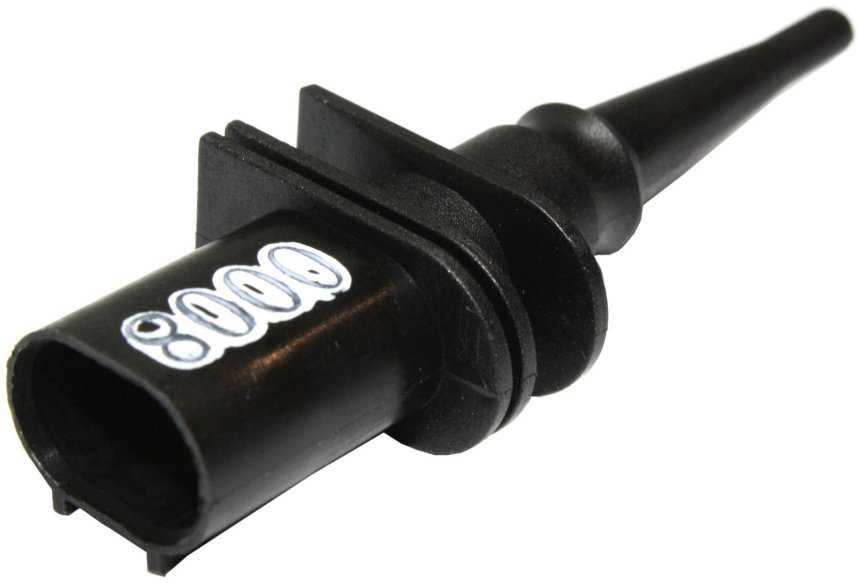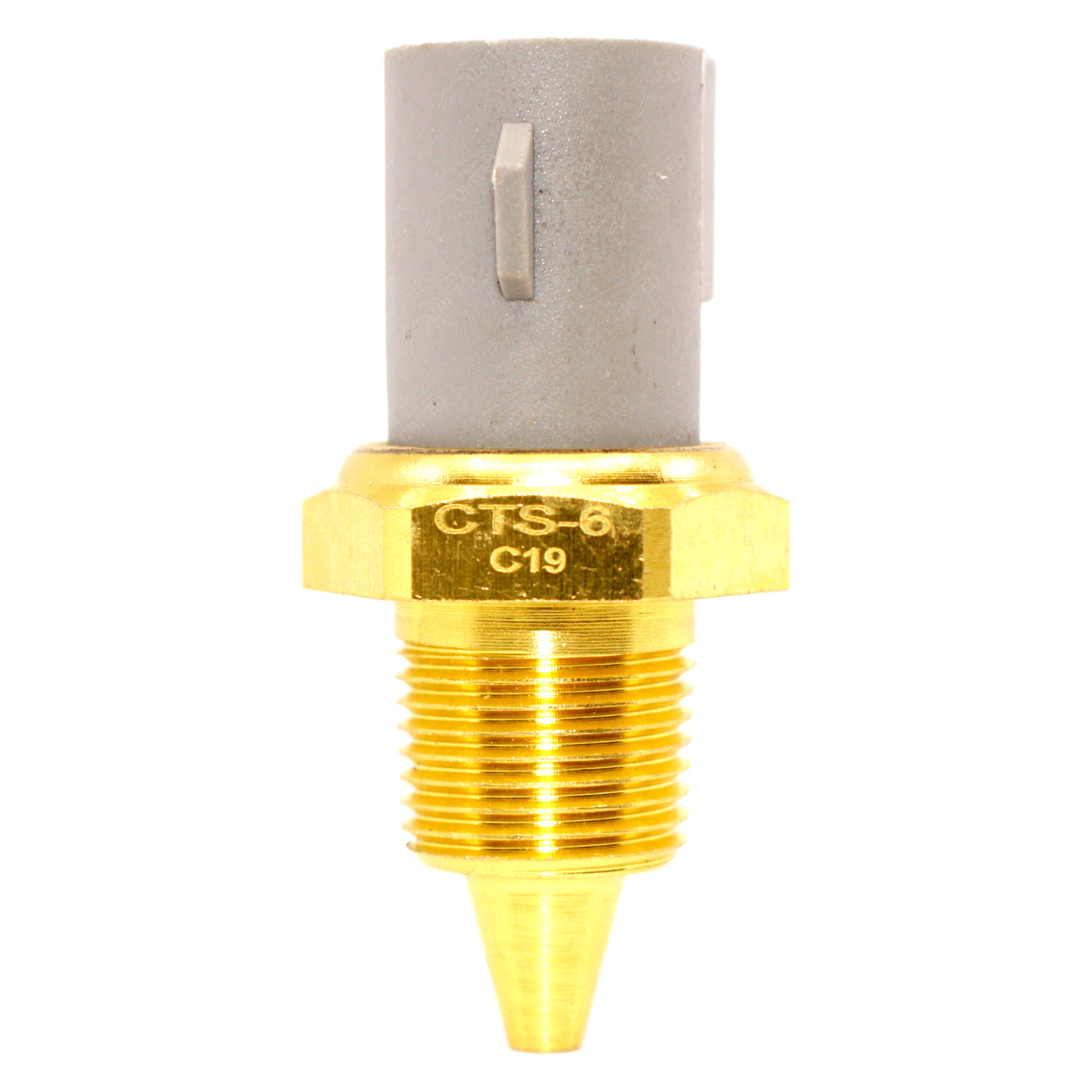Ambient Air Temperature Sensor Replacement Cost

The sun beat down on the black asphalt, turning the parking lot into a shimmering mirage. You hop into your car, eager to escape the heat, but the dashboard display mocks you: a blinking check engine light and a temperature reading that seems wildly inaccurate. Is it really 95 degrees in October? A nagging feeling creeps in – something's not right with your car's temperature sensor.
The cost to replace an ambient air temperature sensor can vary significantly depending on factors like the car's make and model, the location of the sensor, and labor rates at your chosen repair shop. Understanding these factors will help you budget effectively and avoid being overcharged.
Understanding the Ambient Air Temperature Sensor
The ambient air temperature sensor, often shortened to AAT sensor, plays a crucial role in your car's climate control system and engine management.
It measures the temperature of the air outside your vehicle. This information is then used by the car's computer to optimize engine performance and regulate the heating and air conditioning systems.
Without a functioning AAT sensor, your car's climate control might struggle to maintain a comfortable temperature, or your engine's fuel efficiency could suffer.
Why is it Important?
The ambient air temperature sensor’s impact extends beyond simple comfort. Think of it as a key player in a complex orchestra.
The data it provides informs the engine control unit (ECU), which then adjusts the air-fuel mixture for optimal combustion. This leads to better fuel economy and reduced emissions.
Furthermore, some modern vehicles rely on AAT sensor data to manage features like automatic engine start-stop and even certain safety systems.
Factors Affecting Replacement Cost
Several elements influence the final bill for an AAT sensor replacement. Breaking down these factors will empower you to make informed decisions.
The make and model of your vehicle are primary determinants. Luxury brands or vehicles with complex sensor configurations often have higher parts and labor costs.
Parts Cost
The cost of the sensor itself can range from as little as $15 to upwards of $100 or more. The price depends on the brand, quality, and the specific requirements of your car.
Aftermarket sensors are generally cheaper but may not offer the same reliability or accuracy as original equipment manufacturer (OEM) parts. Consider the trade-offs between cost savings and long-term performance.
Labor Costs
Labor charges can vary widely depending on the mechanic's hourly rate and the location of the sensor. Sensors that are easily accessible will naturally require less labor time.
Some sensors are located behind the bumper or grille, necessitating more extensive disassembly and increasing the labor cost. Expect labor rates to range from $75 to $150 per hour, but this can fluctuate based on your geographic location.
Location, Location, Location
The physical location of the AAT sensor also impacts the labor cost. Some sensors are easily accessible, perhaps clipped to the front grille or under the side mirror.
Others, however, are tucked away in more challenging locations, requiring more time and effort to access and replace. A sensor buried deep within the engine bay will naturally incur higher labor charges.
Average Replacement Cost Estimates
While the cost can vary, let's look at some ballpark figures. Remember that these are estimates, and actual prices may differ based on your specific circumstances.
On average, you can expect to pay between $80 and $250 for an ambient air temperature sensor replacement. This includes both parts and labor.
For a more precise estimate, it’s always best to get quotes from several reputable mechanics in your area. This allows you to compare prices and services.
DIY Replacement: Is it Possible?
For mechanically inclined individuals, replacing the AAT sensor might be a do-it-yourself project. However, proceed with caution.
If the sensor is easily accessible and you have the necessary tools and a basic understanding of automotive repair, it could save you money on labor costs. Always consult your vehicle's repair manual for specific instructions and safety precautions.
However, if you are uncomfortable working on your car or the sensor is in a difficult-to-reach location, it's best to leave the job to a professional. Improper installation can damage the new sensor or other components of your car.
Finding a Reputable Mechanic
Choosing the right mechanic is crucial to ensure a quality repair at a fair price. Ask for recommendations from friends, family, or online review sites.
Look for mechanics with certifications from organizations like the National Institute for Automotive Service Excellence (ASE). ASE-certified technicians have demonstrated competency in various areas of automotive repair.
Before authorizing any work, get a detailed estimate in writing that includes the cost of parts, labor, and any applicable taxes or fees. Don't hesitate to ask questions and clarify any uncertainties.
Getting Multiple Quotes
It’s always a good idea to get quotes from multiple mechanics before committing to a repair. This allows you to compare prices and services.
Be wary of extremely low quotes, as they may indicate substandard parts or inexperienced technicians. Focus on finding a balance between price and reputation.
A slightly higher price from a trusted and experienced mechanic might be worth it in the long run, ensuring a reliable and long-lasting repair.
Preventative Measures and Maintenance
While AAT sensor failure isn't always preventable, some steps can help extend its lifespan. Regular car maintenance is key.
Ensure that your car's cooling system is properly maintained, as overheating can indirectly affect the AAT sensor. Avoid exposing the sensor to extreme conditions or physical damage.
Pay attention to any warning signs, such as inaccurate temperature readings or climate control malfunctions. Addressing issues promptly can prevent further damage and potentially save you money in the long run.
The Long View: Beyond the Immediate Cost
Replacing an ambient air temperature sensor is often a relatively minor repair, but its impact on your car's overall performance shouldn't be underestimated.
By ensuring that your car's systems are functioning correctly, you're contributing to its longevity, fuel efficiency, and your own driving comfort and safety. Think of it as an investment in your car's well-being.
So, the next time that check engine light flickers on, don’t panic. Take a deep breath, research the potential causes, and approach the repair process with knowledge and confidence. A functioning AAT sensor isn't just about knowing the outside temperature; it's about ensuring the smooth and efficient operation of your vehicle for years to come. And that's a worthwhile investment any day.


















